Papers by Cheryl Lancaster
The History of Stem Cell Research
Historical Studies in the Natural Sciences, Sep 1, 2019
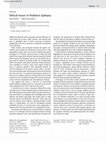
Journal of Pediatric Epilepsy, 2020
Medicine frequently comes up against ethical dilemmas, for which there are no clear "right" answe... more Medicine frequently comes up against ethical dilemmas, for which there are no clear "right" answers. This special issue aims to highlight some of those occurring in pediatric epileptology and raise awareness of potential frameworks to aid clinicians. What readers may recognize through the papers presented is that despite the contributors coming from a wide geographical range, there are recurrent themes that appear throughout 21 st-century clinical practice. A child who may benefit from surgical intervention may be living in the United States, Spain, Italy, Romania, and so on, and similar discussion may be required involving health care professionals (HCPs), the patient, and patient advocates. Similar questions arise regardless of country: How much weight should be given to patients' requests? Who ultimately decides on current treatment? If the patient cannot make a contribution, who should be their representative? How do we balance the "pros and cons" of a particular therapeutic regime? Is it ethical to try pediatric patients on drugs that have not been licensed for use in children? Despite the cultural pluralities in the countries represented, the same dilemmas emerge. This suggests that there is a need for an overarching understanding of medical ethics in a way that can be practically employed by the HCPs wherever they work. It would be nice to have a flowchart telling HCPs which "morally correct" action should be taken in each situation, but this unfortunately is not possible. What is possible, however, is that practitioners are equipped with knowledge about moral theories and ethical approaches that enable them to make ethically sound (and justifiable) decisions, which take into account cultural, social, religious, and legal pluralities. These types of considerations are vital for developing ethically justifiable decisions. It is by learning various approaches to medical ethics that the practitioner can navigate their field. The practice of medicine was, at least initially, considered to be an art. Although science has helped medicine develop therapies, diagnostic tests, and classification of diseases
Practical Ethical Approaches for Common Issues in Pediatric Epilepsy
Journal of Pediatric Epilepsy, 2020
The aim of this commentary is to provide clinicians with the tools needed (or, at least, knowledg... more The aim of this commentary is to provide clinicians with the tools needed (or, at least, knowledge of where to find them) to navigate the often-turbulent seas of medical ethics. The cases described and questions asked in this issue are not only relevant to pediatric epilepsy but also typical of quandaries faced frequently by health care professionals (HCPs). By examining these cases and extrapolating the ethical questions raised, the clinician will find that there are several ethical approaches that can be taken and may lead to a variety of ways forward. However, by employing the ideas highlighted in this commentary, it is my hope that HCPs will be able to identify these various points of view, evaluate their options, and act in ways that are ethically justifiable.
The History of Stem Cell Research: A Philosophical Review
Historical Studies in the Natural Sciences, 2019
BOOK REVIEW
R. G. Mazzolini and H.-J. Rheinberger, eds. Differing Routes to Stem Cell Research: G... more BOOK REVIEW
R. G. Mazzolini and H.-J. Rheinberger, eds. Differing Routes to Stem Cell Research: Germany and Italy. Bologna and Berlin: Il Mulino/Duncker & Humblot, 2012. 271 pp., illus., index. ISBN 978-3-428-13849-4. €22 (softcover).
M. B. Fagan. Philosophy of Stem Cell Biology: Knowledge in Flesh and Blood. London and New York: Palgrave MacMillan, 2013. xx + 274 pp., illus., index. ISBN 978-1-349-34985-2. $95 (softcover).
J. Maienschein. Embryos Under the Microscope: The Diverging Meanings of Life. Cambridge MA: Harvard University Press, 2014. x + 352 pp., illus., index. ISBN 978-0-674-72555-3. $27 (hardcover).
L. Laplane. Cancer Stem Cells: Philosophy and Therapies. Cambridge MA: Harvard University Press, 2016. 272 pp., illus., index. ISBN 978-0-674-08874-0. $41 (hardcover).

Aligning Faith with Medicine: Medical Ethics, Reproduction and Catholic Morality in Francophone and Anglophone Normative Literature, c. 1840–1960
Journal of Religious History, 2022
This paper focuses on intersections of medical ethics and religious commitments by charting conce... more This paper focuses on intersections of medical ethics and religious commitments by charting conceptions of the Catholic doctor in French and English-language normative texts from the mid-nineteenth to the mid-twentieth century. Behavioural norms for doctors were increasingly emphasised in writings on pastoral medicine, especially regarding obstetrics and advice on sexual hygiene, with the Ten Commandments and the Sacraments forming the initial ethical framework. From the 1890s, Catholic medical deontology emerged as a genre in its own right, reflecting a distinct identity of Catholic doctors in medical faculties and in their own professional societies. Simultaneously, the range of topics broadened. While traditional issues of reproductive ethics such as medical abortion and emergency baptism remained central concerns, eugenic sterilisation and euthanasia posed new challenges. Catholic doctors were now expected to take on a social role that went beyond the care of their individual patients, especially in questions of population politics. A popular contributor to the eugenics debate was the French medical scientist Alexis Carrel.
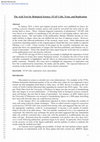
In January 2014, a letter and original research article were published in Nature describing a pro... more In January 2014, a letter and original research article were published in Nature describing a process whereby somatic mouse cells could be converted into stem cells by subjecting them to stress. These “stimulus-triggered acquisition of pluripotency” (STAP) cells were shown to be capable of contributing to all cell types of a developing embryo, and extra-embryonic tissues. The lead author of the publications, Haruko Obokata, became an overnight celebrity in Japan, where she was dubbed the new face of Japanese science. However, in the weeks that followed publication of the research, issues arose. Other laboratories and researchers (including authors on the original papers) found that they were unable to replicate Obokata et al.’s work. Closer scrutiny of the papers by the scientific community also suggested that there was manipulation of images that had been published, and Obokata was accused of misconduct. Those who should have been supervising her work (also her co-authors on the publications) were also heavily criticised. The STAP cell saga of 2014 is used as an example to highlight the importance of trust and replication in twenty-first century biological science. The role of trust in the scientific community is highlighted, and the effects on interactions between science and the public examined. Similarly, this essay aims to highlight the importance of replication, and how this is understood by researchers, the media, and the public. The expected behaviour of scientists in the twenty-first century is now more closely scrutinised.
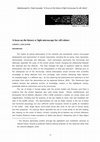
Kaleidoscope, Oct 15, 2014
This essay will consider the use and influence of light microscopy (and its variants) in biologic... more This essay will consider the use and influence of light microscopy (and its variants) in biological cell culture. Improvements in technology generated several instruments for use by scholars in the sixteenth and seventeenth century, and the microscope is one example. Beginning with the development of the microscope and tracing its prominence through the first observations in the seventeenth century, the lack of technical development in the eighteenth century, a revival in the nineteenth century, this essay will consider how the microscope became a ‘black box’ in twentieth century cell biology. To do this, the use of the light microscope and its variants will be considered in relation to cell biology and cell culture; a field of research and a technique that became increasingly important in the twentieth century, requiring light microscopy. Despite the apparent rise in understanding of cell culture techniques and the loss of light microscopy understanding and techniques, I suggest that both microscopy and cell culture have become standardised methods in modern biological science, with generally little in-depth understanding of either in the youngest generations of twenty-first century biologists.
Drafts by Cheryl Lancaster

Liberalism and Illiberalism: The Role of the Law and the Lab in Stem Cell Misconduct
The aim of this chapter is to discuss the legal and cultural factors that affect scientific misco... more The aim of this chapter is to discuss the legal and cultural factors that affect scientific misconduct, with a particular focus on stem cell research. Whilst some countries have (so far) been able to avoid significant stem cell research misconduct, others have not. This chapter will show that there are particular combinations of legislation and university culture which can enable misconduct, whilst other combinations are more preventative. In order to assess how law and laboratories have such effects, legislation concerning research integrity, misconduct, and stem cell research will be considered using examples from various countries and regions. Secondly, the role of the laboratory culture in various countries will be examined, including their history; this approach provides context to current laboratory cultures around the world. Following examination of both relevant legislation and laboratory culture, the influence of these factors on stem cell misconduct will be evaluated, paying particular attention to recent analysis carried out following the rise in interest in scientific misconduct. This chapter will conclude that there is a specific mixture of laws and labs that have the potential to enable misconduct to take place.

Nineteenth Century Identification of Embryonic Stem Cells: The Contribution of Martin Barry (1802-1855)
I argue that the physician Martin Barry (1802-1855) conceptualised embryonic stem cells in the 18... more I argue that the physician Martin Barry (1802-1855) conceptualised embryonic stem cells in the 1830s and 1840s. In order to evaluate this claim, I will consider the knowledge and understanding of early nineteenth century embryology, before considering the work of Barry. In particular, I will consider the hypotheses of Barry in four papers: three articles on Researches in embryology (1838-1840) and On the nucleus of the animal and vegetable “cell” (1847). In these papers, Barry suggests that the fertilised egg divided several times to form a cluster of cells, inside each of which is a nucleus. Inside this nucleus is the hyaline, passed from mother to daughter cell. The hyaline allows passage of properties from parents to offspring, and enables daughter cells to become a variety of cell types. Here then, I argue that Barry is describing two key properties of stem cells: asymmetrical division and multipotency.
Theses by Cheryl Lancaster

A history of embryonic stem cell research: Concepts, laboratory work, and contexts
This thesis focuses on the history of embryonic stem cell research, spanning in particular the ni... more This thesis focuses on the history of embryonic stem cell research, spanning in particular the nineteenth and twentieth centuries. As yet, there has not been a comprehensive history of embryonic stem cell research carried out, which is a particular aim of this thesis. The first two chapters consider the conceptualisation of the stem cell, and the development and diversity of relevant disciplines and their establishment in the twentieth century; in particular, this covers heredity, genetics,embryology and development. This is illustrated through the use of experimental embryology, or ‘fantastical experiments’, that were proposed in the nineteenth century, and carried out in the twentieth. The third chapter considers the theoretical and practical links between cancer and embryonic cells. The fourth and fifth chapters explore the isolation and culture of murine and human embryonic stem cells, focusing on the social, political, and economic factors affecting stem cell research, and the motivations behind the isolation of embryonic stem cells in the 1980s and 1990s. The
sixth chapter queries whether the history presented suggests that a new stem cell concept is emerging.
There are three questions that this thesis aims to answer. Firstly, what are the (historical) social and political influences that affect (embryonic) stem cell research? Evidence presented suggests that this has occurred from the nineteenth century, and continues today. Secondly, this thesis queries the importance of cell fate, and cell fate studies, to embryonic stem cell research. Since one of the two abilities of stem cells is the ability to differentiate, cell fate and studies of cell fate are central to developing a stem cell concept, and may also be influential in changing that concept in the future. Lastly, this thesis asks which paradigms have affected embryonic stem cell research throughout its history. In particular, the genetic paradigm is shown to be influential from the early twentieth century onwards. More recently, it has been proposed that stem cell research needs to undergo a paradigm shift, from the stem cell entity view, to the stem cell state view. This is also explored through the thesis, with the aim of generating a better understanding of stem cells for future researchers.
A summary of my thesis, currently titled "A History of Embryonic Stem Cell Research, 1800-2000".

The Conceptualisation of the Stem Cell: The Influence of the Spleen Colony Assay by JE Till and EA McCulloch
The first published use of the term ‘Stammzelle’ was in 1868 by Ernst Haeckel, and the term has b... more The first published use of the term ‘Stammzelle’ was in 1868 by Ernst Haeckel, and the term has been in constant use since (‘stem cell’ was first published in English by EB Wilson in 1896). The definition has changed throughout however, particularly during the first few decades of its use. Several alternatives for ‘stem cell’ have also been muted, including ‘mother cell’, for example. As the meaning of the term ‘stem cell’ has changed, I propose that the concept has also changed. Here, I discuss the impact of the spleen colony assay (devised by Ernest McCulloch and James Till at the Ontario Cancer Institute) on the concept of the stem cell. I conclude that the concept of the stem cell has changed since the early 1960s (and the publication of the spleen colony assay method), although this is not solely due to the work of Till and McCulloch.
(For a copy of this dissertation, please email.)
The research presented in this thesis endeavours to further understanding of the cytoskeletal pro... more The research presented in this thesis endeavours to further understanding of the cytoskeletal protein keratin 15 (K15), and the role this protein has on maintaining the stem cell niche. This study has focused on studying the role of K15 by using small interfering ribonucleic acid (siRNA) to knock-down K15 in different cell lines (HaCaT cells, MET 1, 2 and 4 cells and normal human epidermal keratinocytes). To observe the effect of K15 on stem cells, adhesion, migration, differentiation and proliferation were assessed following K15 knock-down by siRNA.
Presentations by Cheryl Lancaster
The Acid Test for Biological Science
In 2014, Nature published work describing a process that would convert any cell into a stem cell.... more In 2014, Nature published work describing a process that would convert any cell into a stem cell. The lead author of the work, Haruko Obokata, became an overnight celebrity, but the excitement was short lived. Scientists around the world were unable to replicate the experiment, and the results were thought to be dubious at best. This case study is used as an example to highlight the role of trust in the scientific community, and the importance of replication in science.

Early conceptualisation of the embryonic stem cell
Stem cell history begins with theory, not physical entities. The phrase "stem cell" first appeare... more Stem cell history begins with theory, not physical entities. The phrase "stem cell" first appeared in print in 1868, in Ernst Haeckel's Natürliche Schöpfungsgeschichte. But what developments had been made in biology to allow Haeckel to reach this milestone? This presentation will consider several aspects of research in the context of late eighteenth and early nineteenth century European (and in particular German) universities, beginning with the identification of cells as the basic units of life, and Schwann and Schleiden's Cell Theory. In the early decades of the nineteenth century, a younger generation of naturalists took-up embryological study, and began by repeating those studies they had learned about as students. Four such researchers were Karl Ernst von Baer, John Evangelista Purkyně, Jean Louis Prévost, and Jean Baptiste Dumas. Purkyně chose chickens as his animal of study, identifying the germinal vesicle in chicken eggs; this was important work, bridging the gap between avian and mammalian embryology. von Baer’s work followed that of Dumas and Prévost, dissecting rabbits then a dog. Inside the dog, von Baer claims he observed an egg yolk, and published his observations in January 1828, describing the Graafian vesicle as the true mammalian egg. This egg provided a place for development, and became part of the foetus, possible due to the presence of the egg yolk. The presentation will also consider the practical aspect of embryology and development, from the seventeenth century work made possible due to the technological advances in optics, to the nineteenth century experiments carried out in attempts to prove or disprove various theories of the era. Such theories created debates over preformation, and whether the sperm or ova were the most influential germ in creation of new life. Eventually, this led to ideas regarding the egg as a cell – an important milestone in conceptualising embryonic stem cells. Foremost in this work was Carl Gegenbaur, a colleague of Ernst Haeckel. From the work describing the unfertilised egg as a cell, the natural conclusion to this was considering what occurred after fertilisation. Possibly the most informative work in this field was carried out in the late 1830s by Scottish physician Martin Barry. In a series of three reports to the Royal Society’s Philosophical Transactions, Barry described the maturation of the egg, and the first stages of development. This included identifying that the ‘vesicles’ that arise from division through early embryogenesis are ‘vesicles’ as described by others in the adult. This, I argue, is the first instance in embryology of any individual equating embryonic cells with adult cells. In the 1840s, Barry’s observations were confirmed by Carl Bergman (at the time, Wagner’s assistant at Göttingen), and Heinrich Rathke. This presentation will then consider how all of these developments led to Haeckel’s coining of the term Stammzelle, and the contexts it was used in, including the influence of Charles Darwin’s ‘tree diagrams’, and the context of Stamm, concluding with how Haeckel’s understanding of development led him to identify certain cells as ‘stem cells’. Inevitably, the term was not used consistently the first years following its conception, however by the early twentieth century, a clear ‘stem cell concept’ was developing. By the end of the nineteenth century, there were more sophisticated tools and techniques available to carry out experimental embryology, and an emerging stem cell concept. The last part of this presentation will consider how these merged to pave the way for the first descriptions of embryonic stem cells. This includes consideration of Wilhelm Roux’s ‘pricking experiments’, Hans Driesch’s work with sea urchin embryonic cells, and a short examination of American research (focussing on cell lineage).

The Legal Understanding of Scientific Research: Perceptions of Shaken Baby Syndrome
This presentation focuses on the legal interpretation of scientific and clinical research in the ... more This presentation focuses on the legal interpretation of scientific and clinical research in the courts, with a particular reference to shaken baby syndrome (SBS). This example has been carefully selected since it is a rather contentious issue: firstly, there is no evidence that is agreed by all experts to specifically demonstrate that SBS has occurred. Secondly, since experts do not agree on this, it has led to (I argue) misinterpretation in the courts, and in particular a misunderstanding of the way scientific and medical research is carried out. This presentation investigates the legal attitudes towards research, and how it is interpreted in the courts. SBS will be used as a case study to examine how the legal system deals with conflicting evidence.
Non-accidental head injury (NAHI) is a particularly controversial area of paediatrics. It implies that one of the ultimate taboos has been broken - that a parent deliberately harms their child. Furthermore, this is currently particularly problematic to diagnose, since there are conflicting views concerning the observation of symptoms during post-mortem examination, and lack of independent witnesses to SBS cases. The symptoms relied on as evidence of SBS, are from SBS cases, leaving us with a problem of circular logic, or, as Harry Collins refers to it, as the experimenter’s regress.

The First Identification of Embryonic Stem Cells: What’s the Evidence?
In this paper, I will consider whether English physician Martin Barry (1802-1855) was the first t... more In this paper, I will consider whether English physician Martin Barry (1802-1855) was the first to identify embryonic stem cells in the 1830s.
In 1838, 1839, and 1840, Barry published three papers, called Researches in Embryology, in the Royal Society’s Philosophical Transactions. In these articles, Barry describes the mature egg, fertilisation, and the early development of the mammalian embryo. This presentation will focus on the second paper, published in 1839.
Barry went to Germany to work with physiologist Johannes Müller (1801-1858) and learn about animal development and microscopy. The skills Barry learned enabled him to dissect and slice mammalian ovaries; in Researches in Embryology: First Series (1838), Barry describes his observations regarding ova development, maturation, structure and size.
The Second Series (1839) focused on development of the ovum, tracing the early stages of development. Barry noted that there was still a ‘dark period’ (between mating and appearance of vertebrae) in mammalian development - little was understood regarding this time, and Barry aimed to shed some light. Barry examined hundreds of ova, mostly from rabbits, carefully measuring and drawing what he saw.
Barry described the stages of development in intricate detail. For example, Barry notes many vesicle (cell) divisions, eventually resulting in small vesicles hung together ‘like a mulberry’. Within each vesicle was a ‘nucleus’, previously described by physiologist Gabriel Gustav Valentin (1810-1883) in the nervous system. Here then, Barry is clearly indicating that what he is seeing in the developing embryo can be directly compared with the adult cells observed by Valentin. By doing this, Barry is establishing that what he sees at this developmental stage is analogous with the ‘subunits’ of adult animals.
A further indication that Barry understood the vesicles of the early embryo as those which would become the vesicles of adulthood, is in the discussion of methods. Barry utilised the most modern techniques available for his observations, which were primarily histological methods, which required tissue preservation. Barry described using ‘kreosote water’ for preserving ova; a solution Müller had shown to Barry, used to preserve tissues of the nervous system. Barry must have considered the ovum tissue similar to nervous tissue to believe that Müller’s kreosote water would be as useful for preserving ova as it was nervous tissue.
In order to further examine the evidence concerning whether Barry identified embryonic stem cells or not, the research citing Barry’s studies will also be examined.
This presentation will give a brief overview of the types of topics covered in my PhD thesis. In ... more This presentation will give a brief overview of the types of topics covered in my PhD thesis. In an attempt to answer why embryonic stem cells were researched (and used in research) prior to 1998, I focus on what were arguably the first experiments in the late 19th and early 20th century, then three main areas: development, differentiation, and reprogramming. These areas cover the early, mid, and later twentieth century, demonstrating that there was in fact a significant amount of embryonic stem cell research going on prior to 1998. Embryonic stem cells themselves were a focus for research during these earlier periods; the early experiments of Wilhelm Roux and
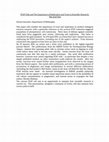
This paper will consider the importance of trust and replication in modern biological sciences re... more This paper will consider the importance of trust and replication in modern biological sciences research, with a particular reference to the current STAP (stimulus-triggered acquisition of pluripotency) cell controversy. Three lines of defense against scientific fraud have been suggested: peer review, refereeing and replication. This latter is considered the gold standard. As of 8 April 2014, no researchers have claimed success at replicating the STAP procedure, including one of the paper's authors. Trust between researchers also appears to have been an issue in this case. On 29 January 2014, an article and a letter were published in the highly-regarded journal Nature. The publications, from the RIKEN Center for Developmental Biology (Japan), claimed that exposing adult cells to extreme stress (such as dipping in acid) could induce these cells to become stem cell-like. Initial reaction from the stem cell community was that this may be a useful technique. One week after publication however, concerns were raised regarding STAP cells -in particular that despite a very simple published method, no other researchers could replicate the results. After two weeks, concerns were raised further when irregularities were observed in the images from the Nature papers. One month after publication, and with a continuing stream of accusations of plagiarism and image manipulation in several different publications (including the lead author's PhD thesis), many in the stem cell field felt that the Nature STAP articles were 'dead'. An internal investigation at RIKEN, possibly politically motivated, did not appear to consider many important issues (such as the possibility of cell culture contamination or plagiarism), and instead seems to scapegoat the lead author, Haruko Obokata. The current STAP cell case is an opportunity to examine how scientific research is carried out. This presentation, alongside a summary of events, will also examine how science polices itself.

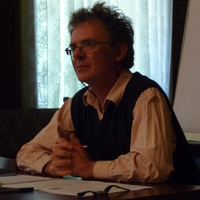




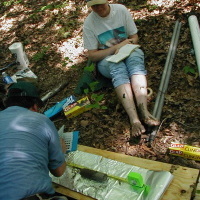

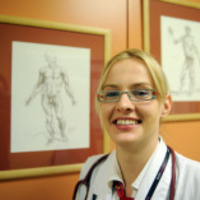
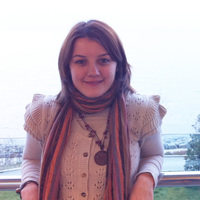

Uploads
Papers by Cheryl Lancaster
R. G. Mazzolini and H.-J. Rheinberger, eds. Differing Routes to Stem Cell Research: Germany and Italy. Bologna and Berlin: Il Mulino/Duncker & Humblot, 2012. 271 pp., illus., index. ISBN 978-3-428-13849-4. €22 (softcover).
M. B. Fagan. Philosophy of Stem Cell Biology: Knowledge in Flesh and Blood. London and New York: Palgrave MacMillan, 2013. xx + 274 pp., illus., index. ISBN 978-1-349-34985-2. $95 (softcover).
J. Maienschein. Embryos Under the Microscope: The Diverging Meanings of Life. Cambridge MA: Harvard University Press, 2014. x + 352 pp., illus., index. ISBN 978-0-674-72555-3. $27 (hardcover).
L. Laplane. Cancer Stem Cells: Philosophy and Therapies. Cambridge MA: Harvard University Press, 2016. 272 pp., illus., index. ISBN 978-0-674-08874-0. $41 (hardcover).
Drafts by Cheryl Lancaster
Theses by Cheryl Lancaster
sixth chapter queries whether the history presented suggests that a new stem cell concept is emerging.
There are three questions that this thesis aims to answer. Firstly, what are the (historical) social and political influences that affect (embryonic) stem cell research? Evidence presented suggests that this has occurred from the nineteenth century, and continues today. Secondly, this thesis queries the importance of cell fate, and cell fate studies, to embryonic stem cell research. Since one of the two abilities of stem cells is the ability to differentiate, cell fate and studies of cell fate are central to developing a stem cell concept, and may also be influential in changing that concept in the future. Lastly, this thesis asks which paradigms have affected embryonic stem cell research throughout its history. In particular, the genetic paradigm is shown to be influential from the early twentieth century onwards. More recently, it has been proposed that stem cell research needs to undergo a paradigm shift, from the stem cell entity view, to the stem cell state view. This is also explored through the thesis, with the aim of generating a better understanding of stem cells for future researchers.
(For a copy of this dissertation, please email.)
Presentations by Cheryl Lancaster
Non-accidental head injury (NAHI) is a particularly controversial area of paediatrics. It implies that one of the ultimate taboos has been broken - that a parent deliberately harms their child. Furthermore, this is currently particularly problematic to diagnose, since there are conflicting views concerning the observation of symptoms during post-mortem examination, and lack of independent witnesses to SBS cases. The symptoms relied on as evidence of SBS, are from SBS cases, leaving us with a problem of circular logic, or, as Harry Collins refers to it, as the experimenter’s regress.
In 1838, 1839, and 1840, Barry published three papers, called Researches in Embryology, in the Royal Society’s Philosophical Transactions. In these articles, Barry describes the mature egg, fertilisation, and the early development of the mammalian embryo. This presentation will focus on the second paper, published in 1839.
Barry went to Germany to work with physiologist Johannes Müller (1801-1858) and learn about animal development and microscopy. The skills Barry learned enabled him to dissect and slice mammalian ovaries; in Researches in Embryology: First Series (1838), Barry describes his observations regarding ova development, maturation, structure and size.
The Second Series (1839) focused on development of the ovum, tracing the early stages of development. Barry noted that there was still a ‘dark period’ (between mating and appearance of vertebrae) in mammalian development - little was understood regarding this time, and Barry aimed to shed some light. Barry examined hundreds of ova, mostly from rabbits, carefully measuring and drawing what he saw.
Barry described the stages of development in intricate detail. For example, Barry notes many vesicle (cell) divisions, eventually resulting in small vesicles hung together ‘like a mulberry’. Within each vesicle was a ‘nucleus’, previously described by physiologist Gabriel Gustav Valentin (1810-1883) in the nervous system. Here then, Barry is clearly indicating that what he is seeing in the developing embryo can be directly compared with the adult cells observed by Valentin. By doing this, Barry is establishing that what he sees at this developmental stage is analogous with the ‘subunits’ of adult animals.
A further indication that Barry understood the vesicles of the early embryo as those which would become the vesicles of adulthood, is in the discussion of methods. Barry utilised the most modern techniques available for his observations, which were primarily histological methods, which required tissue preservation. Barry described using ‘kreosote water’ for preserving ova; a solution Müller had shown to Barry, used to preserve tissues of the nervous system. Barry must have considered the ovum tissue similar to nervous tissue to believe that Müller’s kreosote water would be as useful for preserving ova as it was nervous tissue.
In order to further examine the evidence concerning whether Barry identified embryonic stem cells or not, the research citing Barry’s studies will also be examined.
R. G. Mazzolini and H.-J. Rheinberger, eds. Differing Routes to Stem Cell Research: Germany and Italy. Bologna and Berlin: Il Mulino/Duncker & Humblot, 2012. 271 pp., illus., index. ISBN 978-3-428-13849-4. €22 (softcover).
M. B. Fagan. Philosophy of Stem Cell Biology: Knowledge in Flesh and Blood. London and New York: Palgrave MacMillan, 2013. xx + 274 pp., illus., index. ISBN 978-1-349-34985-2. $95 (softcover).
J. Maienschein. Embryos Under the Microscope: The Diverging Meanings of Life. Cambridge MA: Harvard University Press, 2014. x + 352 pp., illus., index. ISBN 978-0-674-72555-3. $27 (hardcover).
L. Laplane. Cancer Stem Cells: Philosophy and Therapies. Cambridge MA: Harvard University Press, 2016. 272 pp., illus., index. ISBN 978-0-674-08874-0. $41 (hardcover).
sixth chapter queries whether the history presented suggests that a new stem cell concept is emerging.
There are three questions that this thesis aims to answer. Firstly, what are the (historical) social and political influences that affect (embryonic) stem cell research? Evidence presented suggests that this has occurred from the nineteenth century, and continues today. Secondly, this thesis queries the importance of cell fate, and cell fate studies, to embryonic stem cell research. Since one of the two abilities of stem cells is the ability to differentiate, cell fate and studies of cell fate are central to developing a stem cell concept, and may also be influential in changing that concept in the future. Lastly, this thesis asks which paradigms have affected embryonic stem cell research throughout its history. In particular, the genetic paradigm is shown to be influential from the early twentieth century onwards. More recently, it has been proposed that stem cell research needs to undergo a paradigm shift, from the stem cell entity view, to the stem cell state view. This is also explored through the thesis, with the aim of generating a better understanding of stem cells for future researchers.
(For a copy of this dissertation, please email.)
Non-accidental head injury (NAHI) is a particularly controversial area of paediatrics. It implies that one of the ultimate taboos has been broken - that a parent deliberately harms their child. Furthermore, this is currently particularly problematic to diagnose, since there are conflicting views concerning the observation of symptoms during post-mortem examination, and lack of independent witnesses to SBS cases. The symptoms relied on as evidence of SBS, are from SBS cases, leaving us with a problem of circular logic, or, as Harry Collins refers to it, as the experimenter’s regress.
In 1838, 1839, and 1840, Barry published three papers, called Researches in Embryology, in the Royal Society’s Philosophical Transactions. In these articles, Barry describes the mature egg, fertilisation, and the early development of the mammalian embryo. This presentation will focus on the second paper, published in 1839.
Barry went to Germany to work with physiologist Johannes Müller (1801-1858) and learn about animal development and microscopy. The skills Barry learned enabled him to dissect and slice mammalian ovaries; in Researches in Embryology: First Series (1838), Barry describes his observations regarding ova development, maturation, structure and size.
The Second Series (1839) focused on development of the ovum, tracing the early stages of development. Barry noted that there was still a ‘dark period’ (between mating and appearance of vertebrae) in mammalian development - little was understood regarding this time, and Barry aimed to shed some light. Barry examined hundreds of ova, mostly from rabbits, carefully measuring and drawing what he saw.
Barry described the stages of development in intricate detail. For example, Barry notes many vesicle (cell) divisions, eventually resulting in small vesicles hung together ‘like a mulberry’. Within each vesicle was a ‘nucleus’, previously described by physiologist Gabriel Gustav Valentin (1810-1883) in the nervous system. Here then, Barry is clearly indicating that what he is seeing in the developing embryo can be directly compared with the adult cells observed by Valentin. By doing this, Barry is establishing that what he sees at this developmental stage is analogous with the ‘subunits’ of adult animals.
A further indication that Barry understood the vesicles of the early embryo as those which would become the vesicles of adulthood, is in the discussion of methods. Barry utilised the most modern techniques available for his observations, which were primarily histological methods, which required tissue preservation. Barry described using ‘kreosote water’ for preserving ova; a solution Müller had shown to Barry, used to preserve tissues of the nervous system. Barry must have considered the ovum tissue similar to nervous tissue to believe that Müller’s kreosote water would be as useful for preserving ova as it was nervous tissue.
In order to further examine the evidence concerning whether Barry identified embryonic stem cells or not, the research citing Barry’s studies will also be examined.